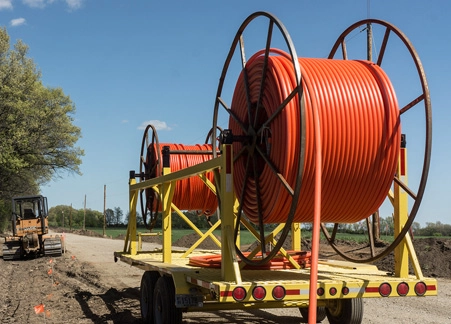
-
 Afrikaans
Afrikaans -
 Albanian
Albanian -
 Amharic
Amharic -
 Arabic
Arabic -
 Armenian
Armenian -
 Azerbaijani
Azerbaijani -
 Basque
Basque -
 Belarusian
Belarusian -
 Bengali
Bengali -
 Bosnian
Bosnian -
 Bulgarian
Bulgarian -
 Catalan
Catalan -
 Cebuano
Cebuano -
 Corsican
Corsican -
 Croatian
Croatian -
 Czech
Czech -
 Danish
Danish -
 Dutch
Dutch -
 English
English -
 Esperanto
Esperanto -
 Estonian
Estonian -
 Finnish
Finnish -
 French
French -
 Frisian
Frisian -
 Galician
Galician -
 Georgian
Georgian -
 German
German -
 Greek
Greek -
 Gujarati
Gujarati -
 Haitian Creole
Haitian Creole -
 hausa
hausa -
 hawaiian
hawaiian -
 Hebrew
Hebrew -
 Hindi
Hindi -
 Miao
Miao -
 Hungarian
Hungarian -
 Icelandic
Icelandic -
 igbo
igbo -
 Indonesian
Indonesian -
 irish
irish -
 Italian
Italian -
 Japanese
Japanese -
 Javanese
Javanese -
 Kannada
Kannada -
 kazakh
kazakh -
 Khmer
Khmer -
 Rwandese
Rwandese -
 Korean
Korean -
 Kurdish
Kurdish -
 Kyrgyz
Kyrgyz -
 Lao
Lao -
 Latin
Latin -
 Latvian
Latvian -
 Lithuanian
Lithuanian -
 Luxembourgish
Luxembourgish -
 Macedonian
Macedonian -
 Malgashi
Malgashi -
 Malay
Malay -
 Malayalam
Malayalam -
 Maltese
Maltese -
 Maori
Maori -
 Marathi
Marathi -
 Mongolian
Mongolian -
 Myanmar
Myanmar -
 Nepali
Nepali -
 Norwegian
Norwegian -
 Norwegian
Norwegian -
 Occitan
Occitan -
 Pashto
Pashto -
 Persian
Persian -
 Polish
Polish -
 Portuguese
Portuguese -
 Punjabi
Punjabi -
 Romanian
Romanian -
 Russian
Russian -
 Samoan
Samoan -
 Scottish Gaelic
Scottish Gaelic -
 Serbian
Serbian -
 Sesotho
Sesotho -
 Shona
Shona -
 Sindhi
Sindhi -
 Sinhala
Sinhala -
 Slovak
Slovak -
 Slovenian
Slovenian -
 Somali
Somali -
 Spanish
Spanish -
 Sundanese
Sundanese -
 Swahili
Swahili -
 Swedish
Swedish -
 Tagalog
Tagalog -
 Tajik
Tajik -
 Tamil
Tamil -
 Tatar
Tatar -
 Telugu
Telugu -
 Thai
Thai -
 Turkish
Turkish -
 Turkmen
Turkmen -
 Ukrainian
Ukrainian -
 Urdu
Urdu -
 Uighur
Uighur -
 Uzbek
Uzbek -
 Vietnamese
Vietnamese -
 Welsh
Welsh -
 Bantu
Bantu -
 Yiddish
Yiddish -
 Yoruba
Yoruba -
 Zulu
Zulu


Des . 30, 2024 19:30 Back to list
Effective Techniques for Installing Grounding Rods in Electrical Systems
Bonding Ground Rods An Essential Practice for Electrical Safety
Grounding, or earthing as it is also known in some regions, is a crucial aspect of electrical safety in residential and commercial installations. One of the key elements in a grounding system is the ground rod. Ground rods serve as a physical connection to the Earth, effectively dissipating excess electrical energy that may arise from fault conditions or lightning strikes. One important aspect of grounding systems is the process of bonding ground rods, which ensures that the grounding system is effective and safe.
What Are Ground Rods?
Ground rods are conductive rods, typically made of copper or galvanized steel, that are driven into the ground to provide a pathway for electric current to safely disperse into the Earth. The National Electrical Code (NEC) in the United States recommends that each building have a grounding electrode system, which usually consists of one or more ground rods, to protect against electric shock and to safeguard delicate electronic equipment.
The Importance of Bonding
Bonding ground rods refers to the practice of interconnecting multiple ground rods into a cohesive grounding system. This is essential for several reasons
1. Enhanced Safety Bonding improves the effectiveness of the grounding system by reducing the resistance to ground. A well-bonded grounding system ensures that in the event of a fault, electrical energy will have a direct and low-resistance path to the Earth, minimizing the risk of electric shock or fire. 2. Consistent Voltage Levels When multiple ground rods are bonded together, it helps to maintain consistent voltage levels across the grounding system. This reduces the risk of voltage fluctuations that can occur if ground rods are improperly installed or not interconnected.
3. Increased Reliability A bonded ground rod system creates redundancy. If one rod were to fail due to corrosion or other factors, the bonded connection with other rods would help ensure continued grounding capability.
How to Bond Ground Rods
bonding ground rods

To bond ground rods effectively, it is essential to follow proper installation practices
1. Rod Placement Ground rods should be installed at a minimum depth of 8 feet, although local codes may have specific requirements. Each ground rod must be spaced at least 6 feet apart to ensure effective bonding and performance.
2. Connecting Wires After installing the ground rods, use grounding conductors to connect each rod to a common ground wire. The NEC specifies a minimum size for these wires, typically an insulated copper conductor that is at least 6 AWG.
3. Bonding Connection The connections between ground rods should be secured using clamps or other appropriate devices that are corrosion-resistant. This ensures a solid electrical connection that will withstand environmental conditions over time.
4. Testing the System After installation, it is important to test the grounding system for resistance to ground. This may be done using specialized equipment like a ground resistance tester, which can verify the system’s effectiveness.
Conclusion
Bonding ground rods is a fundamental practice that contributes significantly to electrical safety. By ensuring that ground rods are interconnected and properly installed, property owners can protect not only themselves but also their electronic devices from damage caused by electrical surges. The importance of a well-designed and bonded grounding system cannot be overstated; it is a crucial line of defense against the unpredictability of electrical issues.
In summary, when planning electrical installations, consideration of grounding and bonding practices should be a priority. Compliance with local electrical codes and standards, along with meticulous attention to installation practices, can provide peace of mind and significantly enhance safety for homes and businesses alike. As electrical systems continue to evolve, maintaining robust grounding and bonding methods will remain a key aspect of electrical design and safety.











